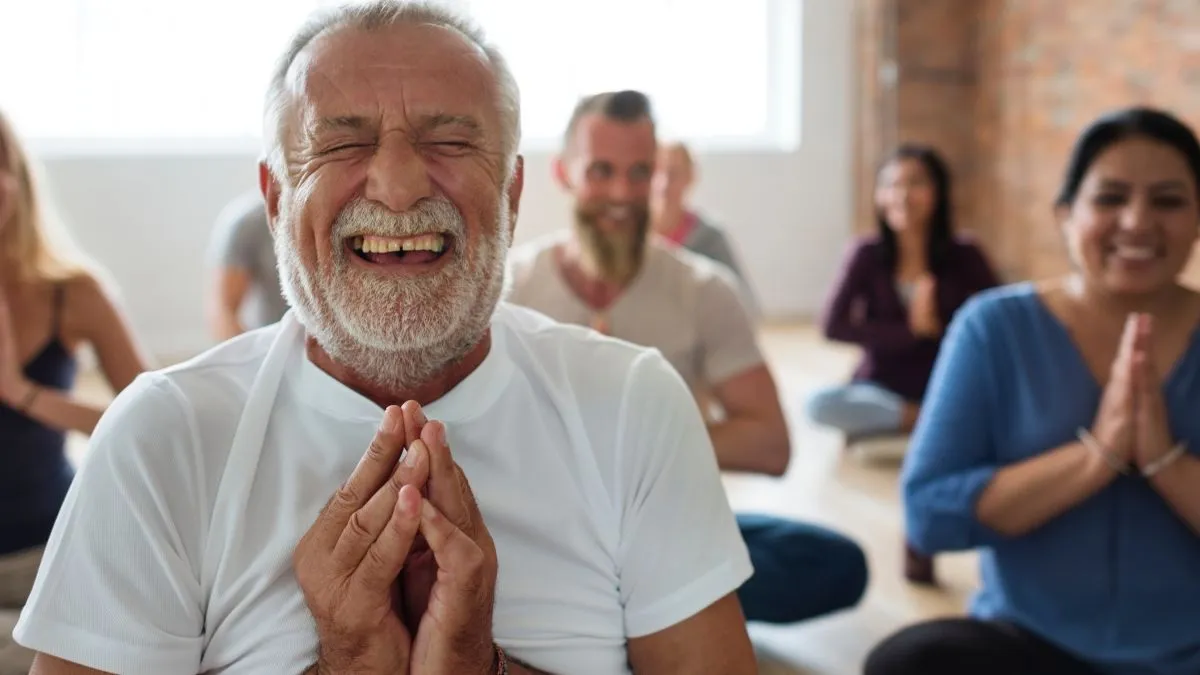
As India’s population ages, the health concerns of seniors are becoming an increasingly urgent public health priority. Nearly 20% of India’s elderly live with multiple chronic conditions, with hypertension, arthritis, and osteoporosis among the most common . These conditions not only compromise physical mobility but also independence, mental well-being, and quality of life. Compounding this is a healthcare landscape where out-of-pocket expenses account for over 60% of medical costs, and access to specialised geriatric care remains limited, especially in non-metro areas .
Table of Content:-
Amidst these challenges, yoga has emerged as a culturally rooted, accessible, and evidence-backed intervention uniquely suited to address both the physical and psychosocial needs of older adults.
Why yoga works for seniors with chronic conditions
According to Dr Shabnam Mir, Consultant Physician, Medical advisor and Head of Clinical Services at Antara Senior Care, "Far beyond a form of exercise, yoga integrates movement, breath regulation, mindfulness, and relaxation techniques, all of which have measurable effects on physiological systems most affected by chronic illness."
Regular yoga practice has been shown to:
- Activate the parasympathetic nervous system, lowering blood pressure and heart rate
- Reduce systemic inflammation and oxidative stress, both contributors to hypertension and arthritis
- Strengthen musculoskeletal structures through low-impact, weight-bearing movements, which help preserve bone density and improve joint flexibility
- Enhance balance and proprioception, significantly reducing the risk of falls, a leading cause of injury-related hospitalisation among India’s elderly
These multi-dimensional benefits of yoga which makes it an effective, scalable option in preventive and therapeutic elder care.
Also Read: How Prenatal Yoga Helps You Bond With Your Baby Before Birth
Gentle interventions for heart health
Hypertension affects nearly 30% of India’s senior citizens , often aggravated by stress, sedentary routines, and poor sleep. Studies have shown that yoga can lower both systolic and diastolic blood pressure by 5 to 10 mm Hg in older adults, largely through breath work and relaxation techniques .
Pranayama practices such as Anulom Vilom (alternate nostril breathing) and Bhramari (humming bee breath) help modulate autonomic nervous system function, reducing sympathetic over-activity, a known driver of elevated blood pressure. Restorative postures like Viparita Karani (legs-up-the-wall) and Supta Baddha Konasana (reclining bound angle) gently promote circulation and ease anxiety, without placing strain on the cardiovascular system .
Easing stiffness, restoring mobility
Arthritis affects one in five Indian seniors, leading to joint pain, stiffness, and functional limitations. Yoga addresses these challenges by promoting gentle, fluid movement, improving flexibility, and strengthening the muscles supporting affected joints.
Modified poses such as Cat-Cow stretches, Tadasana (mountain pose), and supported Vrikshasana (tree pose) enhance posture, reduce stiffness, and improve balance. For seniors with limited mobility, chair yoga and prop-supported routines offer accessible alternatives, ensuring safe participation. Research consistently reports reductions in joint pain and improvements in physical function among older adults practicing tailored yoga routines.
Building strength and preventing falls
Osteoporosis silently weakens bones, increasing fracture risk, particularly in the hips, spine, and wrists. One study found that consistent yoga practice over 12 minutes a day can slow or reverse bone density loss in seniors. Yoga aids by improving posture, muscle strength, and balance, thereby reducing the likelihood of falls .
Also Read: Can Yoga Help In Managing Diabetes? Find Out Here
Weight-bearing standing poses like Trikonasana (triangle pose) and Warrior II, adapted to each individual’s ability, encourage skeletal engagement without high-impact stress. Special care must be taken to avoid deep spinal flexions and forceful twists, especially for those with advanced osteoporosis, favouring neutral-spine postures and supported standing movements .
Accessible, community-based care
One of yoga’s most significant advantages lies in its adaptability and low cost. Community-based yoga programs, online sessions, and home-based chair yoga routines make it widely accessible, even for seniors with chronic conditions or mobility challenges. In a country where social isolation affects nearly 20% of older adults, especially in urban settings, group yoga classes double as avenues for social engagement, reducing feelings of loneliness and improving mental well-being.
A gentle invitation to move
The benefits of yoga for seniors are no longer anecdotal. Meta-analyses of multiple clinical studies report over 80% adherence rates during structured yoga programs and significant improvements in mobility, pain levels, sleep quality, and overall vitality . More importantly, it fosters a sense of agency and connection, inviting seniors to move, breathe, and live more fully at every stage of life.
At Antara, our wellness programs are designed around these very principles, integrating yoga into daily care routines to support graceful ageing through evidence-informed, empathetic practices. This International Day of Yoga, let’s collectively recognise the power of simple, mindful movement, not as a performance, but as a gentle, everyday act of self-care and resilience.
Also watch this video
How we keep this article up to date:
We work with experts and keep a close eye on the latest in health and wellness. Whenever there is a new research or helpful information, we update our articles with accurate and useful advice.
Current Version